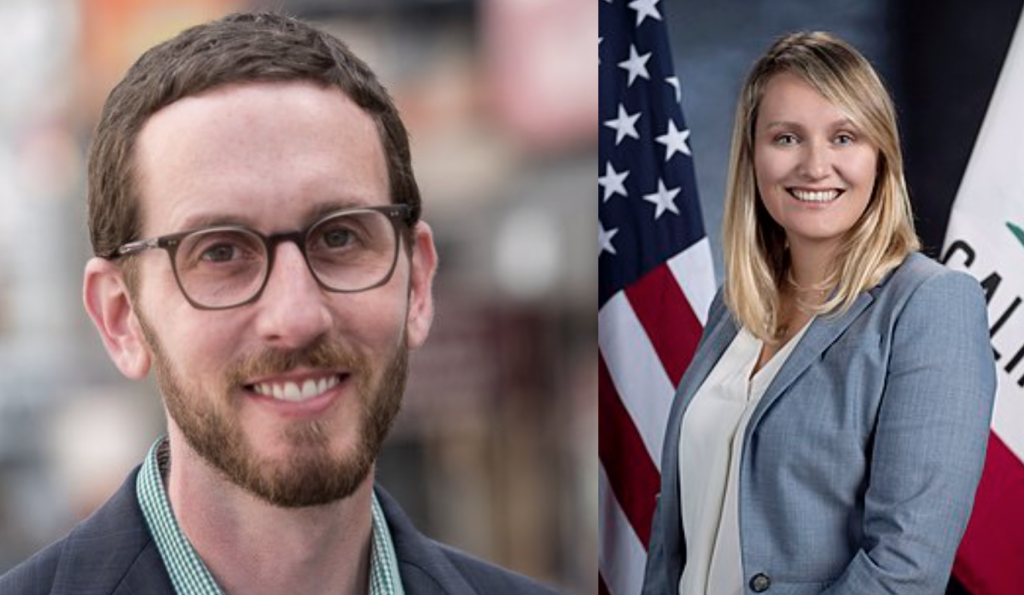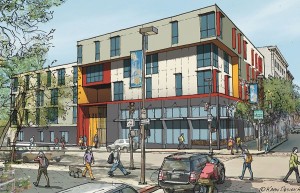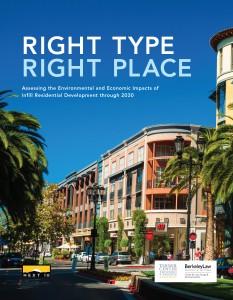
On tonight’s State of the Bay, I’ll be interviewing Steve Berman, the “Bay Area Sports Guy,” now of The Athletic, to hear his insights. Was the 49ers’ shocking loss yesterday a fluke? Will the Warriors’ intriguing new roster work? And can the new WNBA team thrive here?
Then we’ll talk housing in the Bay Area. Governor Newsom recently signed a whopping 56 new housing bills. Cities are under pressure to build more, and fast. Will these new bills help? Joining us will be:
- Sarah Karlinsky of SPUR
- Ben Metcalf of the Terner Center for Housing Innovation at UC Berkeley
Finally, we’ll hear about a new exhibit on censorship called unBANNED, with Tamsin Smith, curator at Arion Press Gallery in the Presidio.
Tune in at 91.7 FM in the San Francisco Bay Area or stream live at 6pm PT. What comments or questions do you have for our guests? Call 866-798-TALK to join the conversation!

It’s another double shot today of me hosting shows on KALW 91.7 FM San Francisco Bay Area. First, at 10am PT, I’ll be guest hosting Your Call’s One Planet Series, where we’ll discuss the viability of carbon capture technology in combating climate change. Carbon capture and storage is the process of capturing and storing carbon dioxide from polluting sources and storing it deep in the ground.
The just-passed (but not yet signed) Inflation Reduction Act includes a change in a crucial tax credit for the carbon capture industry—increasing the government subsidy for capturing CO2 from polluting sources from $50 to $85 per metric ton.
Some environmentalists call these carbon capture subsidies a handout to the oil industry and a distraction from urgently needed actions. How effective is this technology? Joining us to discuss are:
Tony Briscoe, environmental reporter with the Los Angeles Times
Naomi Oreskes, Henry Charles Lea Professor of the History of Science and Affiliated Professor of Earth and Planetary Sciences at Harvard University.
Then we’ll cover the socio-environmental impacts of lithium mining to produce electric vehicles. Joining us will be Jennifer Krill, executive director of Earthworks, a nonprofit organization committed to protecting communities from the adverse impacts of oil and gas and mineral extraction.
Second, later today on State of the Bay at 6pm PT, we’ll cover the latest in San Francisco’s housing saga, as the state threatens to take over land use planning for the City. Plus we’ll discuss the rise of autoimmune disorders and learn about California’s youth governor’s race, covered in a new documentary.
Tune in at 91.7 FM in the San Francisco Bay Area or stream live at 10am PT for Your Call and then again at 6pm PT for State of the Bay. What comments or questions do you have for our guests? Call 866-798-TALK to join the conversation!

Bay Area legislators State Senator Scott Wiener (San Francisco) and Assemblywoman Buffy Wicks (Berkeley) will discuss housing legislation with me tonight on City Visions at 7pm, on 91.7 FM KALW in San Francisco.
Governor Newsom wants 3.5 million new homes built by 2025. How are our legislators planning to get us there? We’ll discuss Senator Wiener’s revamped Senate Bill 50, which encourages development around transit and job centers. And we’ll also find out Assemblywoman Wicks’ plans for this year, after she introduced a suite of housing legislation last year.
Tune in and ask your questions at 866-798-TALK! We’ll be streaming live at 7pm.

On Friday, California sued Huntington Beach over the city’s NIMBY rejection of new housing and overall non-compliance with state housing laws. But it turns out the city was already suing California over its housing streamlining law, SB 35 (Wiener, 2017), in a suit filed on January 17th (City of Huntington Beach v. State of California, Case No. 30-201-01044945-CU-WM-CJC). The lawsuit could be important for resolving a significant question about how much the state can intrude on local land use authority. And my guess is that it will not end well for Huntington Beach’s NIMBYs and their elected official allies.
SB 35, the state law that Huntington Beach is suing over, requires streamlined permitting for certain housing projects in jurisdictions like Huntington Beach, which are behind on meeting state-derived housing targets. Huntington Beach alleges that because it’s a “charter city” under the state constitution, SB 35 shouldn’t apply to it (and others like it).
So what’s a “charter city”? The California Constitution allows cities to become charter cities in order to pass local laws that supersede state laws under certain conditions. Of California’s 478 cities, 108 are charter cities.
Specifically, Huntington Beach officials allege that SB 35’s housing streamlining regime interferes with their “municipal affairs” of land use decision-making, which are otherwise protected from state preemption absent certain circumstances.
As a result, the case will hinge on how the court interprets “municipal affairs,” as defined in the state constitution. As the League of California Cities helpfully describes, charter cities have sovereignty over at least these four areas of “municipal affairs” under the constitution:
- “city police force”
- “subgovernment in all or part of a city”
- “conduct of city elections”
- “the manner in which . . . municipal officers [are] elected.”
Notably, “land use” is not included in the list. And yet Huntington Beach’s attorneys allege in the complaint that their land use sovereignty should be considered a “municipal affair.” Historically, it’s been left up to the courts to determine if land use counts, and they have typically ruled that land use does in fact constitute a “municipal affair.”
But there’s a big exception: when there’s a strong state interest requiring local preemption. In this case, it’s hard to argue that the housing shortage is not a matter of serious statewide concern requiring state intervention. Furthermore, local NIMBY restrictions on development have been a central factor in the lack of production statewide, including restrictive zoning and byzantine permitting processes.
Given the overriding importance of housing production to stabilize prices across the state, my guess is that Huntington Beach leaders will have a hard time making their case in court that this housing streamlining law shouldn’t apply within their borders. And an adverse decision for them would solidify the law’s applicability to the other 107 charter cities in the state.
If they lose this fight, NIMBYs and their allies will still have a few other means to push back against state laws to boost housing production. But they will lose an important judicial avenue with an adverse decision. If so, those seeking more affordable places to live in the state will be better off as a result.
 California is on the verge of passing three big bills to address the severe housing shortage, as Rick Frank writes on Legal Planet. Two of the bills will help fund affordable housing and one will streamline local review of projects in cities and counties that haven’t met their regional housing goals, as set by the state and regional agencies.
California is on the verge of passing three big bills to address the severe housing shortage, as Rick Frank writes on Legal Planet. Two of the bills will help fund affordable housing and one will streamline local review of projects in cities and counties that haven’t met their regional housing goals, as set by the state and regional agencies.
While the affordable housing bills will help, even the billions they would set aside would be essentially a drop in the bucket compared to the need. The state is not in a position to subsidize its way out of a multi-decade long process of under-building homes.
That’s why the most effective solution is also the cheapest: take the shackles off homebuilders and let them build. That is the approach of the streamlining bill, Sen. Scott Weiner’s SB 35. Those shackles primarily involve local government policies that restrict development. They also involve myriad fees placed on developers to fund infrastructure improvements that used to be paid for by local governments, in the pre-Prop 13 days. And in other instances, they involve duplicitous, counter-productive “environmental review” mandated by a CEQA process that hasn’t caught up with current environmental needs.
But these shackles also involve high construction costs. Some of these costs are unavoidable impacts of the market and land scarcity. But many in the development community cite California wage standards as a major hurdle for building new units. And it’s greatly affected the debate around SB 35 to streamline project review, which includes a controversial prevailing wage provision (unions are still opposed to the bill though because without the local review, they lose a bargaining point to extract more worker benefits).
Liam Dillon in the Los Angeles Times has a helpful rundown of the impact of these “prevailing wage” standards that construction unions have helped put in place. Here’s a chart showing what this means in practice in a market like Los Angeles:
The article notes how challenging it is to estimate how much prevailing wage requirements add to construction costs, but it cites the following studies:
| Author | Percent Cost Increase |
|---|---|
| UC Berkeley | 9% to 37% |
| The California Institute for County Government | 11% |
| National Center for Sustainable Transportation | 15% |
| San Diego Housing Commission | 9% |
| Smart Cities Prevail | 0%* |
| Beacon Economics | 46% |
The bottom line is that prevailing wage adds costs, although we don’t know quite how much. But we do know it will slow housing production to some extent.
Of course, these requirements also bring significant benefits in paying good wages and helping to overcome the severe income inequality in the state. We want construction workers who are paid fairly for their work. But we also need more housing to lower costs for everyone else in the state. Hence the controversy.
More research on the impact of these wages would be helpful, as would discussions about alternative policies that could achieve the same ends without limiting housing production. For example, prevailing wage in hot markets like Los Angeles and the Bay Area probably won’t impact construction much. But in some of our more challenging markets that are most in need of infill development, like the Central Valley, and which are also most at-risk for sprawl, any additional requirements can sink a project before it starts.
In some ways, the prevailing wage debates fit into a larger discussion about how we ensure better living standards and wages for all in this country. Do we do it through mandates on the private sector? Or through taxes that we redistribute through social programs, to supplement private wages and benefits without directly burdening companies?
Ultimately, the state will need more creativity about how to address both challenges: wage growth and housing production, as well as more information about the scale of the impact and the potential alternative solutions available. But for now, the controversies are slowing the progress of major housing bills and potentially limiting their scope.
A new study from the real estate website Zillow adds further evidence as to how coastal California’s restrictive housing policies have led to a severe housing and rental crunch:
It’s easy to see how San Francisco has become one of the country’s least affordable housing markets: Zillow’s analysis showed that for every 1,000 new residents, there were just 193 new housing units permitted. Residents of the San Francisco metro can expect to spend 44 percent of their income on rent, or 39.2 percent on a monthly mortgage payment.
Los Angeles is the worst just 187 new housing permits for every 1000 new residents. Residents in Los Angeles County spend 40.1% of their income on a mortgage (if they’re homeowners) and 48.2% of their incomes on rent. Ouch.
The best solution? Deregulate local land use policies, allowing more well-planned compact housing near transit, and build new offices near transit stations as well. Otherwise, we can expect more of these same results going forward, with all the attendant environmental destruction and economic inequality.



